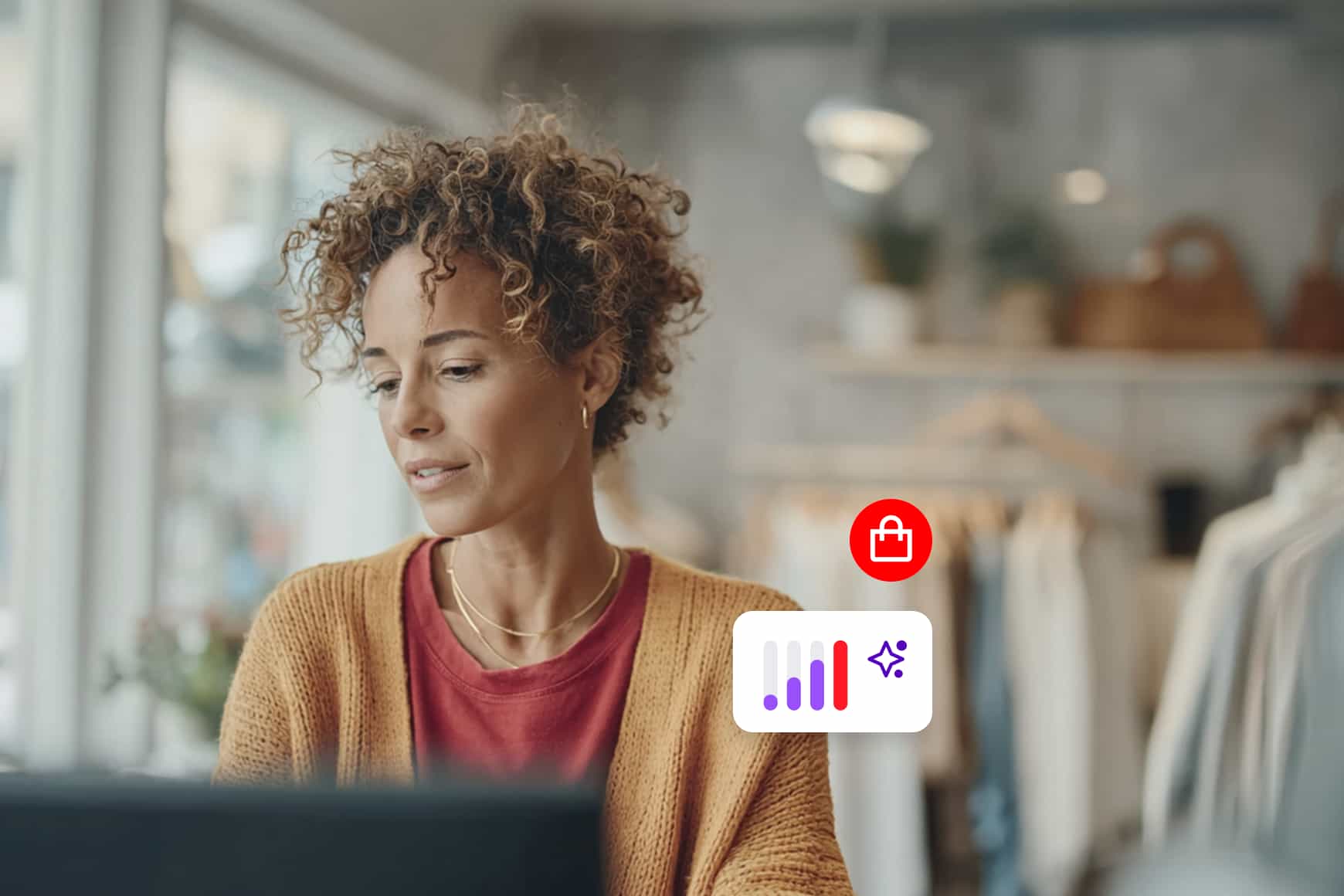Principais KPIs e métricas de call center para acompanhar com uma solução de call center

Por Celia Cerdeira
0 minutos de leitura

Os contact centers devem estar sempre trabalhando para melhorar para que possam oferecer um melhor serviço a seus clientes.
To do this, they must be able to find problems or inefficiencies and correct them. KPIs and metrics provide this visibility, allowing them to give excellent call center customer service.
Saiba mais sobre os principais KPIs e métricas do call center para obter o máximo de ambos.
Analyzing call center key performance indicators (KPIs) is imperative when assessing the effectiveness and efficiency of the call center. A strong call center solution is critical to measure KPIs in an efficient way. While it is clear to most call center managers and decision-makers that they need to analyze call center KPIs, what is often not so clear is which contact center metrics to measure and track over time. This blog post will help you to understand which metrics to track and how a call center solution can help with that. Keep reading to know more about top call center KPIs and metrics to track for success.
Principais KPIs e métricas do call center.
1. Porcentagem de chamadas bloqueadas
Um KPI de call center que tem um grande impacto na satisfação do cliente é a porcentagem de chamadas bloqueadas.Esta é a porcentagem de autores de chamada de entrada que receberam o tom ocupado quando chamam que muitas vezes é causado por um dos seguintes:
- Não há agentes disponíveis e não há filas de chamadas configuradas (ou as filas de chamadas estão cheias), então os chamadores ouvem um tom de ocupado quando ligam ou são encaminhados diretamente para o correio de voz.
- The call center software can not adequately handle the call volume.
Como mesmo uma chamada bloqueada pode ser uma oportunidade perdida de se conectar com um cliente ou cliente potencial, este é um KPI de call center que nunca deve ser ignorado.
2. Tempo médio na fila
No one wants to wait in a queue for a long period of time. Thus, in order to ensure your callers’ wait time is within an acceptable range (as well as customer satisfaction) you must keep track of the average time in queue. This metric is the total time callers wait in call queues divided by the total number of calls answered by agents. It is a great indicator of whether or not your team is providing their callers with the service they deserve.
3. Taxa média de abandono.
O abandono de chamadas, ou a porcentagem de pessoas que desligam antes de chegar a um agente, é uma ocorrência comum no call center e tem um impacto negativo na retenção de clientes.É crucial que as centrais de atendimento centradas no cliente acompanhem este KPI e se certifiquem de que permaneça abaixo de um limite determinado.
4. Nível de serviço.
Service level is the percentage of calls answered within a specified number of seconds. Modern call center solutions typically display KPIs in real-time to both agents and managers in their call center software metrics dashboard so they can make data-driven decisions that will have an impact on keeping this KPI within an acceptable range.
5. Velocidade média de resposta.
The average speed of answer is the average time it takes for calls to be answered in the call center during a specific time frame. This includes time spent waiting in a queue while the agent’s phone rings; however it does not include the time it takes to navigate through the interactive voice response (IVR) system. It is a call center KPI typically referenced by managers when assessing their team’s efficiency and degree of accessibility to their callers.
6. Tempo médio de gerenciamento de chamadas.
Average handle time is the elapsed time from when an agent answers a call until the agent disconnects. It is one of the most commonly analyzed KPIs in the call center industry as it is directly related to caller satisfaction.
7. Tempo médio de trabalho após a chamada.
Na maioria dos call centers, o trabalho de um agente não termina quando ele encerra uma chamada. Na verdade, eles geralmente gastam bastante tempo atualizando bancos de dados, enviando e-mails e informando os colegas sobre a chamada. Este tempo que um agente gasta completando uma transação depois que a chamada finalizou é chamado de tempo de trabalho após a chamada. Os managers geralmente procuram reduzir o trabalho pós-chamada para que possam maximizar o tempo que sua equipe gasta interagindo com os clientes enquanto estão trabalhando — e uma solução de call center forte é a resposta certa para isso.
8. Resolução na primeira chamada.
A resolução na primeira chamada é outro KPI diretamente relacionado com a satisfação do cliente – e é fácil ver o motivo. É a porcentagem de chamadas em que o agente dá uma resposta completa às necessidades do autor da chamada sem ter de transferir, escalar ou devolver a chamada. É tão importante resolver um problema no primeiro contato que muitos afirmam que a resolução na primeira chamada é o KPI mais importante com relação ao nível de satisfação de um cliente com uma empresa. Portanto, deve estar no topo de qualquer lista de métricas do call center para acompanhar ao longo do tempo.
9. Satisfação do cliente.
A satisfação do cliente é um KPI que pode ser adquirido de muitas fontes diferentes. Os call centers normalmente chegam a uma pontuação de satisfação do cliente realizando pesquisas com os clientes, bem como obtendo medições de garantia de qualidade. Independente da metodologia utilizada para chegar a este KPI, este é um fator que deve-se sempre levar em consideração ao analisar a eficácia e a eficiência do call center.
10. Taxa de ocupação.
A taxa de ocupação mede a quantidade de tempo que os agentes estão em chamadas ao vivo, assim como a conclusão dos trabalhos associados às chamadas. Enquanto a maioria dos gerentes de call center procura otimizar as taxas de ocupação, também devem prestar atenção à carga de trabalho do agente ao estabelecer metas para este KPI do call center.
11. Absenteísmo do agente.
O absenteísmo dos agentes, ou o número de dias perdidos por ano devido à ausência dos agentes como uma porcentagem do número total de dias contratados, pode ter um grande impacto na programação e no pessoal do call center, assim como em seus resultados. Este KPI é útil no desenvolvimento de um orçamento, bem como na otimização das práticas de gerenciamento da força de trabalho.
12. Taxa de rotatividade dos agentes.
The final call center KPI that should be included in every call center manager’s list of metrics to track over time is agent turnover rate. This is the percentage of agents who leave the call center to work elsewhere. Agent turnover rate significantly impacts customer satisfaction, call center scheduling and team morale, thus it should be included on a list of contact center metrics to track over time.
Simplifique o acompanhamento dos KPI com uma solução de call center na nuvem.
Measuring call center KPIs that are associated with customer satisfaction, agent effectiveness and call center efficiency should be the main objective of any manager seeking to optimize their call center’s performance. If you’re currently using contact center software but aren’t able to get the visibility you need into top metrics, get a demo of Talkdesk today!

BUYER'S KIT
Kit do comprador do contact center na nuvem
Baixe o kit do comprador do contact center na nuvem para obter acesso instantâneo a uma ferramenta de benchmarking de KPI, modelo de RFP, listas de verificação e relatórios de estratégia.
FAQs.
O que são KPIs de contact center?
Os indicadores-chave de desempenho (KPIs) do contact center são os que os contact centers usam para medir o quão próximos estão de atingir metas comerciais específicas. Estes objetivos podem incluir a redução do tempo médio na fila ou o aumento da velocidade média de resposta, mas a maioria deles está focada em melhorar a experiência do cliente ou a eficiência do call center.
O que são métricas de call center?
Instead of goals, metrics track call center performance and activities on a more general level. These metrics can measure the efficiency of teams, productivity, or other things that can help improve processes or customer loyalty.
O que é um contact center?
A contact center is where an agent answers customer calls and other interactions. This area can be the call center building, a shared workspace, or, for remote workers, a home office. Remote agents often work through cloud contact centers, which makes it possible for them to work wherever they need. These cloud systems also offer other benefits, like the easy establishment of omnichannel strategies and seamless communication with customers across several platforms, such as SMS, online chats, video calls, and email.







